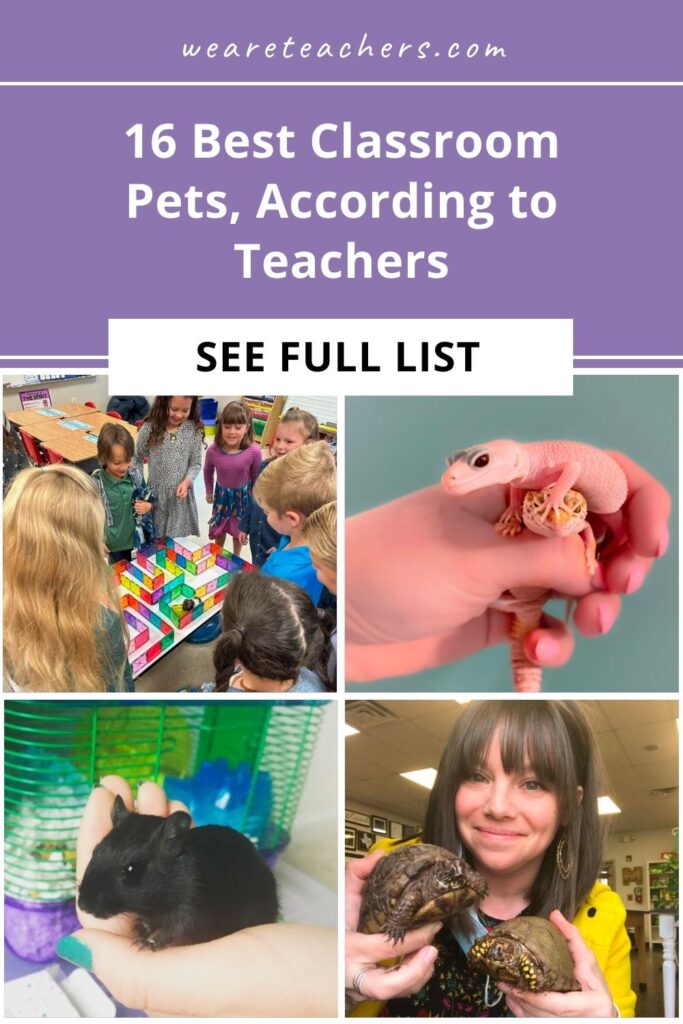Trying to decide if a classroom pet is something you’re willing to take on? While some people think animals have no place in a school, there are many more who believe that classroom pets provide learning experiences that teach children valuable lifelong lessons. Here, we look into the pros and cons, spell out things to take into consideration, and take the advice of our teacher friends on our We Are Teachers Helpline group on Facebook about which pets are best.
Jump to:
- Are Classroom Pets a Good Idea?
- Benefits of Classroom Pets
- Tips for Having Classroom Pets
- Best Classroom Pets for Preschool
- Best Classroom Pets for Elementary School
- Best Classroom Pets for Middle and High School
- Grants for Class Pets
Are Classroom Pets a Good Idea?
Animals are among the many wonders of our world. And giving children an opportunity to live with and learn from them is an amazing privilege that can enrich your classroom community in so many ways. From learning activities across the curriculum to teaching about responsibility and leadership, classroom pets can enhance your students’ overall educational experience.
Not only that, but classroom pets help foster social and emotional skills such as compassion, empathy, and respect for all living things, including animals, humans, nature, and the world we share. In fact, a comprehensive study by the Humane Society, one of the leading protectors of animal welfare, concurs that classroom pets are a valuable investment.
However, the activists at PETA (People for the Ethical Treatment of Animals) disagree, saying the classroom simply isn’t a suitable home for an animal. And let’s face it, taking care of an animal is a big responsibility and one that shouldn’t be taken lightly. Ultimately, the choice is an individual one. It’s imperative to do your research and weigh the options before you make the commitment.
Benefits of Classroom Pets
According to Pets in the Classroom, interacting with a classroom pet is an incredibly rewarding experience for students. Among the many benefits, pets in the classroom:
- Teach empathy and compassion
- Facilitate student responsibility
- Increase student engagement
- Improve attendance due to their classroom pet
- Develop social skills
- Reduce anxiety
- Improve students’ self-esteem
- Decrease necessary disciplinary measures
- Improve test/academic performance
- Can be a best friend
Tips for Having Classroom Pets
For sure, if you’re going on take on the responsibility of having a classroom pet, you need to ensure you do so in the most humane, conscientious way possible. Do your research and make sure the animal you choose is a good fit for the busy environment of a classroom. Once you decide, make sure you create the best habitat possible to keep your pet healthy and happy. Set firm guidelines about how students are allowed to interact with your classroom pet.
In addition, here are some questions to ask yourself before you take the leap:
- Are classroom pets allowed in your school and/or district?
- Do any students in your class or school have sensitivities or severe allergies to animals?
- Does your classroom temperature stay warm or cool enough overnight for the pet?
- Is the pet easy enough for kids to take it home over weekends and breaks if it needs care? If students aren’t available, are you willing to take it to your home?
- What is the cost of food, supplies, and vet bills? Who will pay for them?
Best Classroom Pets for Preschool
Your best bet for preschoolers is to choose a low-maintenance classroom pet. Anything in a tank works best—fish, turtles, frogs, etc. We all know that sometimes little ones can be, shall we say, exuberant at times. So it’s important to protect both your students and the pet while providing the opportunity to learn about and enjoy their classroom pet.
Fish
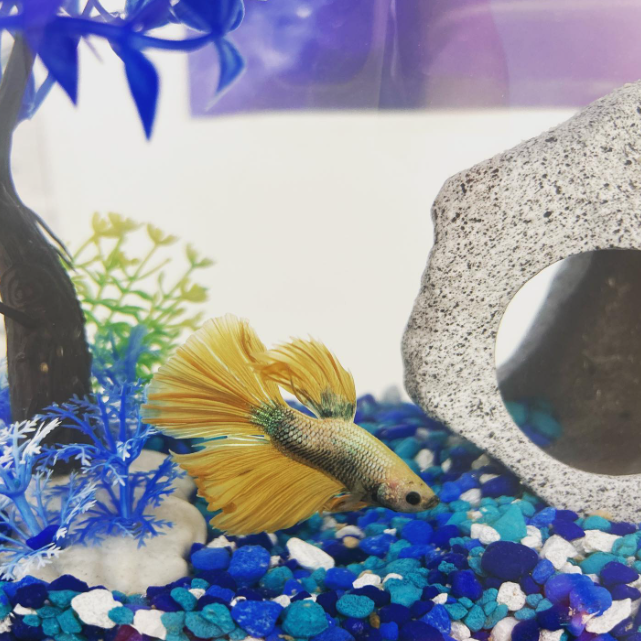
Goldfish, mollies, and betta fish are some of the easiest fish to take care of in a community aquarium. Just make sure to create a tank with plenty of rocks, caves, small toys, and plants to provide enrichment for the fish.
“Beta fish! They’re easy peasy. Just feed them three times a week. Kids don’t freak out if it dies. I bring it home or delegate a student to take it home on breaks.” —D. Sutton
“I have 3 amazing goldfish from Petco that were less than a dollar each. They are the best fish for classroom pets—wonderful and peaceful to watch. The kids love having the job of fish feeder.” —Leslie S.
Aquatic Turtles

These small water turtles—red-eared sliders—are a perfect beginner pet. They are semi-aquatic, meaning they can live in a terrarium with rocks to climb on and a bit of water to swim in. They don’t particularly like to be handled though so keep them safely in their habitat.
“Our little red-eared sliders are just the cutest things! My kiddos are fascinated by them. We’ve read stories about them and have learned to draw pictures of them too. ” —Danielle M.
Jellyfish
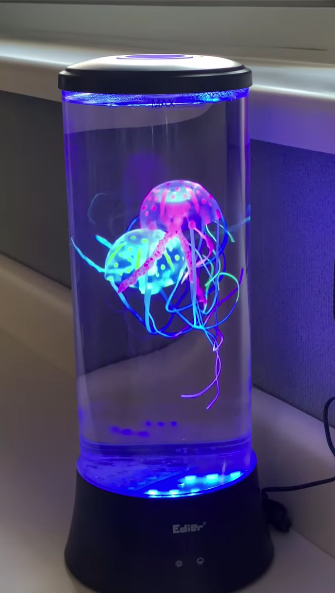
It is possible to have real jellyfish in tanks, but it’s difficult to maintain the appropriate conditions, and it’s fairly expensive. If you’re up for the challenge, then go for it! But if not, try these realistic, zero-maintenance jellyfish.
“I had them in my classroom for a year. They are the best! I was regularly asked if they were real!” —Ann T.
Gerbils
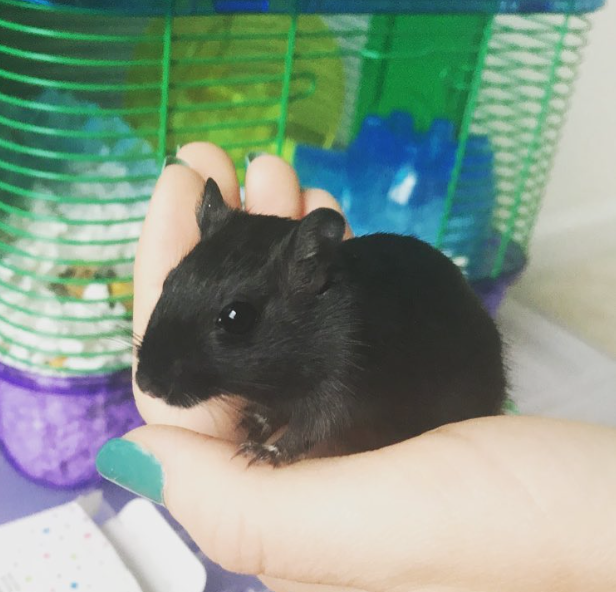
Gerbils only grow to about 4 inches. They have a long and soft tail and enjoy standing on their hind legs. They love to dig and burrow, so a lidded cage with a deep bottom tray filled with nesting and bedding materials is best.
Stuffies

And, of course, lots of teachers recommended the idea of having a stuffed animal as the best classroom pet. Zero maintenance, no worries about anyone getting hurt or being allergic, and easily transportable. Plus, there are multiple ways to explore learning with stuffed animals.
“Two years ago I started the school year by introducing our class mascot. We travel to the zoo each year as a grade level and I told the kids that otters were one of my favorite animals! Ollie the Otter went home with students each weekend and the kids absolutely loved it!” —Ms. Dennis
“Our class pet is a small red stuffed toy bulldog. He’s quiet, no one has an allergy, he’s never bit anyone, administration does not care if he’s there. Very clean, never had an accident on the floor.” —Peter K.
Best Classroom Pets for Elementary School
In elementary school, especially in the upper grades, kids are ready to help out with a classroom pet. Nevertheless, the reality is most of the responsibility will fall on you, their teacher. And you still have to keep a close eye on any interactions between the pet and your students. So make sure you choose one that’s a good fit. Choose any of the pets above, or try one of these.
Geckos
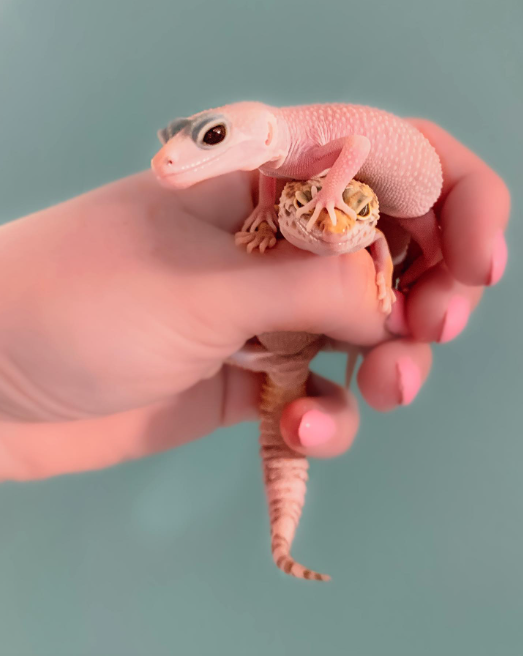
According to Pet Assure, geckos are one of the most popular reptiles to be kept as pets, especially for beginners. And with good reason. They tend to be docile and easy to tame as well as being relatively easy to care for, especially leopard geckos.
“We have geckos. Much easier to care for than the bearded dragon I had but still lots of personality!” —Jean K.
Guinea Pigs

Hands down one of the most recommended classroom pets on our We Are Teachers Helpline group on Facebook, guinea pigs are gentle and easy to care for.
“Guinea pigs are for sure one of the best classroom pets. They can squeak along to the music. I had one and she lived through 7 different classes passing through. They would take her home on weekends and holidays. She was well loved.” —Becky V.
“I have guinea pigs. My kids love them, and because they are highly sociable, they love the kids. I get pine wood chips at a country store north of my school for a fraction of what bedding would cost at a pet store. They can withstand staying at school for a weekend if I can’t find someone to take them home.” —Cynthia H.
Hamsters

Caring for a classroom hamster is more than just fun: It’s a powerful way to teach children empathy via a living, feeling creature. But there are definitely a few tips and tricks to ensuring a good experience for you, your students, and the hamster.
Chicks (with a disclaimer)
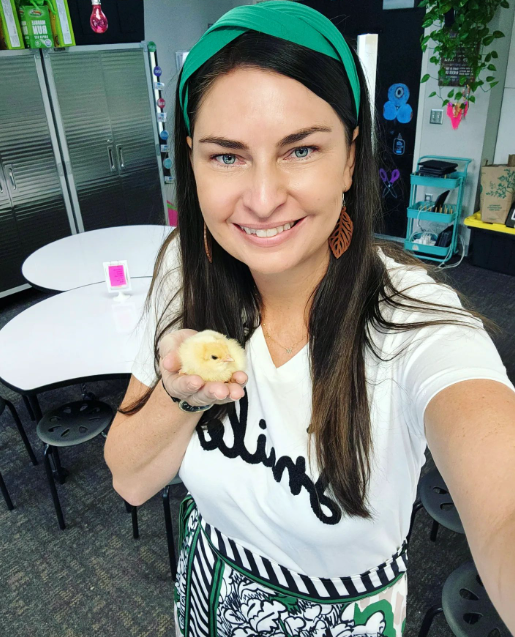
Watching chicks hatch from eggs is a fascinating life cycle lesson kids will never forget. Just make sure you have the right equipment to ensure the best results. And definitely make sure you have someone willing to take the chicks once they are hatched.
“We walked into the classroom this morning and noticed 2 more chicks that hatched overnight. That brings the count up to 5 chicks. Today is hatch day, so we shall see if the last 2 plan to join us.” —STEM Teacher
Stick insects and other insects
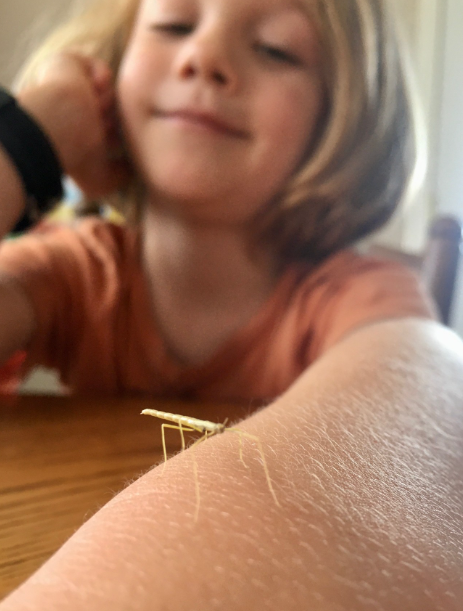
Stick insects are easy pets—they don’t require daily maintenance and can be left alone for a week without any care. They’re friendly and will sit on your hands, but be careful. Stick insects are tame but extremely delicate. The key to keeping stick insects in captivity is mimicking their natural conditions—a great lesson on habitats.
“Our new friends Sticky & Twiggy help us learn! Thank you to everyone who voted on their names! We were able to count, tally, and graph our results.” —Michelle J.
“It is a bit unusual, but my kids love our Madagascar hissing cockroaches and they are so easy to care for.” —Danielle W.
“A tarantula! They are awesome. They take very little care and molt periodically. My class loves mine and even squeamish kids fall in love with it!” —Alicia H.
Frogs and Snails

Frogs and snails, which can be kept in a glass aquarium, make good classroom pets. They’re low maintenance and fun to keep track of.
“We have African dwarf frogs and snails. My students feed them, help change the water, and fill the gallons to sit out. They also turn on the light daily. It’s great for my class because it calms some of my students in a crisis.” —Deanna M.
Russian Tortoises
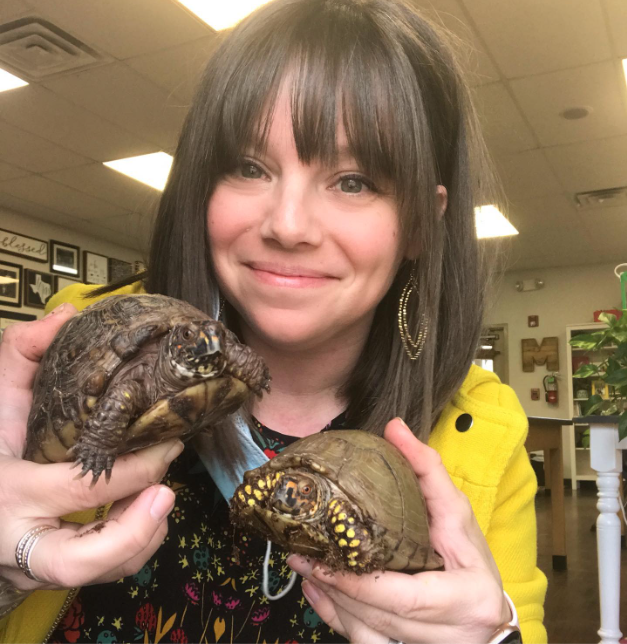
Russian tortoises are a sweet, easy classroom pet. Fairly low maintenance, they’re easygoing and entertaining to have in class, and best of all, they can be educational. Here are a few classroom activities you can use with your tortoises from Pets in the Classroom.
“Russian tortoises are way easier to care for than a water turtle. Plus students could feed them lettuce by hand. They love that!” —Jessie R.
Bunny (also with a disclaimer)

Bunnies are fluffy and adorable, there’s no denying that. But they have special needs that might make them best as a weekly visitor or as a special guest as a reward.
“I love my rabbit. I found him, so it wasn’t really a choice. He takes up a lot of space and is a bit expensive but I wouldn’t trade him.” —Kendra D.
Best Classroom Pets for Middle and High School
Middle schoolers and high schoolers are definitely mature enough to handle the presence of a classroom pet. In addition, you can practically turn over the responsibility to care for them to the more dedicated animal lovers in your class. Choose any pet from above, or try one of these.
Bearded Dragon

“The bearded dragon is fun because you can play with it a lot and then ignore it (still give it food and water) and it will be fine. Some animals become mean if you don’t give them constant attention but bearded dragons don’t. Plus I have never had a bearded dragon bite me or anyone I know of. They are very tame.” —Jessie R.
“Bearded dragons are awesome and very friendly and easy to take care of. Mine was leash-trained too, kids loved taking it for walks.” —Sharon N.
Snake

“Our corn snake is, by far, the easiest to care for of all my classroom pets. It only eats every 1-2 weeks. The kids LOVED it.” —Jennifer A.
“I would take my corn snake with me to dismissal. The kids LOVED it. The teachers that were terrified of snakes steered clear of me when I was hanging up the lanyards! Win-win situation! LOL.” —Jennifer A.
Rat
“We have a rat! I’ve had her two years and she will be going back for a third. I definitely think even older kids can benefit. Life cycle, respecting the pet, just something to pet and be sweet to. I have middle schoolers who adore mine.” —Lauren L.
“I’ve had several rats as pets in my classroom over the years. They have always been wonderful additions to the classroom family.” —Teacher @ #thebusybusyhive
Apply for a grant for a classroom pet
Pets can definitely be on the expensive side. Get help from Pets in the Classroom, a nonprofit that offers an educational grant program established by the Pet Care Trust to provide financial support to teachers who want to provide their students with this incredible learning experience. It’s easy to apply and there are a number of grant options depending on your needs. Pets in the Classroom partners with reputable pet retailers like PetSmart, Petco, Petland, and others.
Do you have a classroom pet? How has the experience been for you and your students? Come share on our We Are Teachers Helpline group on Facebook.
Also, if you’re squeamish about having a live animal in your classroom, you might want to check out Desk Pets.
